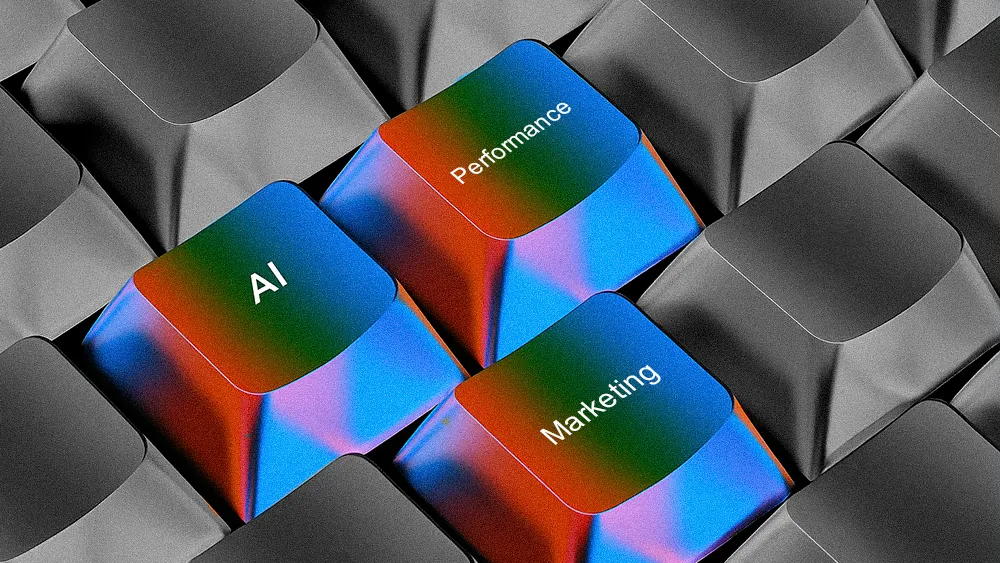


AI is reshaping advertising by enhancing creativity and technology, creating a feedback loop that strengthens brand and performance.
Lamark's Donald Williams argues that AI serves as "rocket fuel" for creativity, not a replacement, driving more calculated risks.
The integration of brand storytelling and performance marketing is crucial for brands to navigate the digital noise effectively.
Cash App's recent campaign exemplifies the shift towards a more integrated approach, focusing on long-term brand mindshare.

As AI reshapes advertising, creativity and technology are working in tandem. Human-led ideas set the brand direction, while AI accelerates iteration—testing, refining, and producing the data that makes those ideas stronger. Together, they form a cycle of feedback and inspiration that drives both brand and performance like never before.
We spoke with Donald Williams, the Chief Digital Officer and Chief Marketing Officer at leading digital marketing solutions company Lamark. This dual role places him squarely at the intersection of technology and brand strategy, offering a unique vantage point on the industry's evolution. Drawing on over two decades of experience, Williams argued that the rise of AI isn't the end of creativity. In his view, it's the rocket fuel.
Creative precision: "Building a brand is about capturing mindshare. Building iterative creative is about capturing a precise moment," Williams stated. "They can operate simultaneously and one can inform the other, but they're not the same. The value lies in applying the information and intelligence toward one another in a recursive manner."
For Williams, the logic is straightforward. As platforms like Meta and Google perfect the art of performance marketing, the sheer volume of messages creates a natural decline in consumer response, forcing brands to re-evaluate their strategy.
Ideas, inspired: "The distribution of countless, incredibly well-qualified messages results in a reduction in consumer response," he explained. "You break through with more calculated risks, and you make good calculated risks by leveraging all this available information in a more meaningful way to come up with ideas that are really inspired."
The story behind the brand: To illustrate the distinction, Williams pointed to the aspirational automaker, Rivian. The company's brand power, he argued, has nothing to do with iterating on lease terms or color options. It’s about creating an experience that captures the imagination. "It has nothing to do with the purchase price of a Rivian. It's all about how they created mindshare," Williams said. "It was always about the invitation: 'Come to our store, grab a cup of coffee, and let us show you why we're so excited about this new vehicle and how it can be additive to your life.' It's the story behind the brand that's working."
This dynamic—where performance data and brand storytelling inform each other—is perfectly captured in a recent campaign from Cash App. The ad, which debuted in theaters before Superman and featured actor Timothée Chalamet, was a masterclass in strategic brand building from a company known for its relentless focus on performance metrics. As confirmed by Cash App's CMO Catherine Ferdon, the goal was to "elevate our brand storytelling" with a campaign designed for cultural impact, with a planned expansion to streaming and CTV platforms.
Cashing in on brand strategy: "It's a total deviation from what they've done historically. The nerdy app-install stuff is still really great and important for their business, but doesn't do a lot for the brand," he explained. "I imagine they want to be the technology that looks to the future and helps small business owners navigate effectively and stick around. That's the association, that's the brand strategy."
The path forward, Williams suggested, requires breaking down the traditional walls that have separated the art of brand building from the science of performance marketing. It's about creating a new, more integrated model for growth. "It's about applying information and intelligence to each other in a recursive way. It used to be, 'Your brand work is over here, your other work is down there—keep them separate.' I don’t know about that."